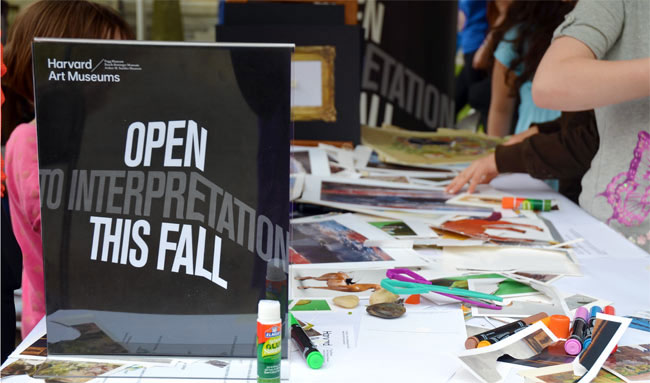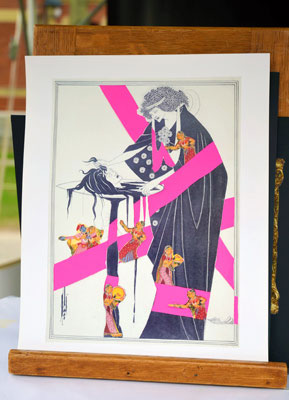The Harvard Art Museums were thrilled to participate in last weekend’s Arts First—the annual showcase of creativity at Harvard that’s dedicated to promoting thoughtful, cross-disciplinary, collaborative art.
On May 2, the museums’ Division of Academic and Public Programs presented a student-choreographed performance by the Harvard-Radcliffe Modern Dance Company. The original piece, titled Borderlands, was performed in the David Rockefeller Center for Latin American Studies and explored the relationship between movement and the questions revolving around the U.S.–Mexico border. Photographs from the exhibition David Taylor: Working the Line, which lined the walls of the performance space, served as inspiration to choreographers Aru Gonzalez and Arthur Moore. After the performance, Gonzalez and Moore told the crowds their influences, which included Taylor’s photographs, personal experience with the border, “liminal” cultural identity, the nature of monuments, and the status of anthropomorphic objects in video games. The event drew together sound, dance, and visual art, perfectly illustrating how individuals expressing ideas through different media can combine their efforts and make the arts all the more significant to the world at large.
The next day, Harvard Art Museums staff set up tables in Harvard Yard and invited visitors of all ages to explore the collage technique to create their own original work of art inspired by the museums’ collections. At one table—covered in an array of neon construction paper—people created collages using examples of Matisse’s later works on display. At the other table visitors used postcards of works from the collections as materials to explore visual narrative. The resulting collages featured humorous combinations of figures and settings: in one, the head of Vincent van Gogh floats in a scene of classical revelry, and in another, the cat from Chou Nien-tsu’s White Cat and Red Flowers gazes out skeptically while posing next to a tiger-like vessel. Visitors were encouraged to post their collages on social media sites with the tag #opentointerpretation, a phrase simultaneously used to promote the museums’ opening this fall. You can find some of the collages on our Facebook page.
Finally, Rachel Steinberg of Harvard Business School presented visitors with her and Danny Samit’s mobile app, YapZap, to foster discussions about art and museums. Steinberg collected wishes for the new Harvard Art Museums, which you can hear on YapZap’s Twitter page. Record your own wish by downloading the YapZap app and searching for the tag wish4harvardmuseums.
This Arts First weekend successfully wove the arts into Harvard’s everyday fabric, encouraging a diverse community of art lovers to create works and inspire one another. One can only imagine what’s in store for the next Arts First, when the Harvard Art Museums will be open to visitors—and interpretation.
Sarah Rosenthal (’15) is our Index student correspondent. She is concentrating in History of Art and Architecture with a focus on Modern and Contemporary Art and a secondary in Computer Science.










